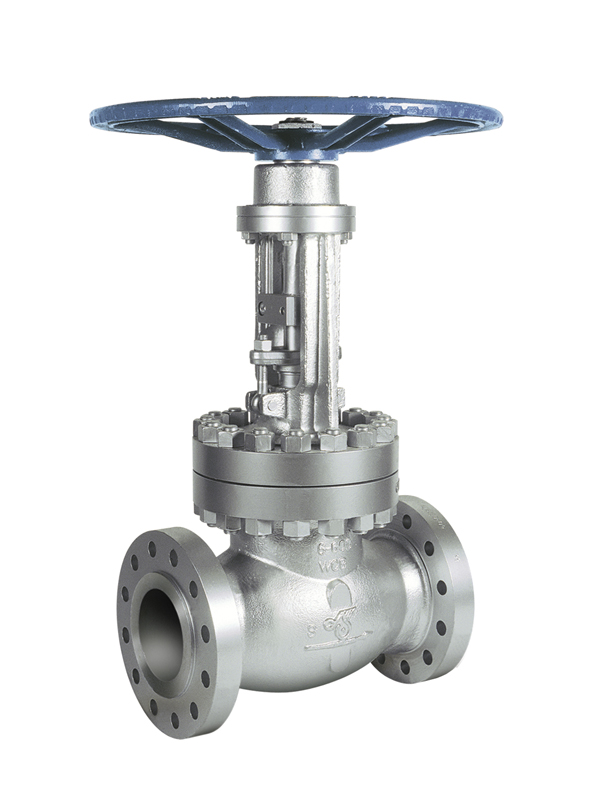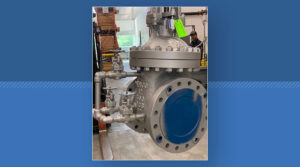
WCB Valve – Meaning, vs. WCC
WCB in valve means Weldable Cast Steel with a B grading. In this article, we discuss the meaning of WCB designation, review WCB material specifications, and compare WCB vs. WCC.
WCB Valve Meaning
WCB material originates from cast steel, with carbon providing the primary alloying element. The meaning of WCB in valve applications is “Weldable Cast B-grade Steel.” Cast steel is a broader term for casting alloys that are iron-based. The produced castings do not undergo eutectic transformation during solidification.
Cast steel provides high plasticity, strength, and toughness, as well as low costs, making it an excellent fit for heavy machinery. The increase of carbon in cast steel also increases the strength and hardness of the steel. This is important in industrial applications in order to decrease wear and tear and increase longevity.
Cast steel formw through the melting of metals, pouring the liquid into a mold, and letting it cool and harden. Casting for valves generally provides a better solution to valve manufacturing than other methods, such as forging. This is due to casting being able to handle complex shapes easier.
WCB’s durability and weldability for various part sizes make it a natural fit for valves. Its non-corrosive properties make it a great fit for petrochemicals, gas, water, steam, and general industrial applications. Valves are necessary for industries, such as the gas industry, to control the flow of fluids and regulate pressure.
ASTM A216 standards cover the use of WCB in valves, in addition to fittings, flanges, and other pressure-containing parts. ASTM A216 steels operate in high-temperature services and possess a high weldability rating, meaning it has high performance while being easy to weld. WCB finds use in many types of valves, including:
- Ball valves
- Check valves
- Wafer check valves
- Gate valves
- Globe valves
- Needle valves
- Plug valves
- Strainers
WCB Material Specifications
ASTM A216 WCB is a casting alloy made up of Iron and Carbon, which gives it more strength, durability to corrosion, and wear resistance. It retains heat during welding operations making it pliable and easy to weld. WCB maintains strong structural integrity during shaping and cutting operations.
To be an ASTM A216 WCB cast steel requires specific chemical and tensile standards. Another requirement of ASTM states that the casting must be free of any adhering elements such as sand, cracks, hot tears, and other discontinuities.
| Carbon | 0.30% |
| Manganese | 1.00% |
| Silicon | 0.60% |
| Sulfur | 0.035% |
| Phosphorus | 0.035% |
| Residuals | 1.00% |
These percentages represent the maximum composition allowed for each element. For WCB, for every .01% reduction of Carbon below the maximum(0.30%), the Manganese can be increased by .04% without passing a maximum of 1.28%. The Residual Elements are primarily made up of Copper, Nickel, Chromium, Molybdenum, and Vanadium to create a maximum of 1% of the total makeup of the steel.
| Tensile Strength | 70 to 95 ksi |
| Yield Strength | 36 ksi |
| Elongation in 2 in | 22% Min |
| Reduction of Area | 35% Min |
WCB vs. WCC
Both WCB and WCC are grades of ASTM A216 cast steels. ASTM A216 has three grading levels: A, B, and C, with C being the highest or “best.” From A to C, the manganese content and yield strength increase. WCC, while similar to WCB, has different chemical and physical requirements.
| WCB | WCC | |
| Carbon | 0.30% | 0.25% |
| Manganese | 1.00% | 1.20% |
| Silicon | 0.60% | 0.60% |
| Sulfur | 0.035% | 0.035% |
| Phosphorus | 0.035% | 0.035% |
| Residuals | 1.00% | 1.00% |
| Tensile Strength | 70 to 95 ksi | 70 to 95 ksi |
| Yield Strength | 36 ksi | 40 ksi |
| Elongation in 2 in | 22% Min | 22% Min |
| Reduction of Area | 35% Min | 35% Min |
WCC contains the exact maximum percentages of Residual Elements; however, for every 0.1% reduction of Carbon below the maximum(0.30%), the Manganese can be increased by .04% without passing a maximum of 1.40% (instead of the 1.28% for WCB). It comprises the same elements as WCB, except with slighter less carbon and a higher maximum percentage of manganese.
WCC has a higher pressure and temperature resistance than WCB because WCC has a higher yield strength and manganese content. Adding manganese to the steel can increase hardness and make it more durable. WCC is considered superior to WCB as it is stronger and better for casting due to its high density and binding.
Because of these attributes, WCC tends to be more expensive. While it is considered better than WCB, the small increase in physical properties usually doesn’t justify the higher price. As such, WCB valves see much more frequent use in industry.


